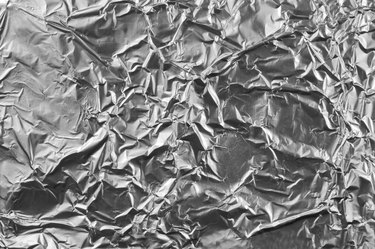
Cold beverages refresh you on a hot day, and properly chilled food minimizes your risk of foodborne illness. To best accomplish both aims, keep your food and drinks in an insulated cooler with some ice or a frozen gel pack. If they're not at hand, however, you might need to improvise with aluminum foil or plastic wrap. Neither material provides especially good insulation in its own right, but both can help in a pinch.
Protection and Deflection
Video of the Day
At first blush it would seem that plastic wrap is a better choice for insulating your food or beverages, since aluminum transfers heat very efficiently. That's ideal for cookware, where you want heat to penetrate quickly, but counter-productive when you're trying to keep warmth out. Plastic, in contrast, is a poor conductor of heat. However, other factors are at play. Aluminum foil forms a reflective surface, which impedes the transfer of heat from the surrounding atmosphere. Unless your food or beverage is sitting directly on a hot surface -- and it shouldn't be -- aluminum is the better choice.
Video of the Day
Real-World Use
In real-life situations, a single layer of plastic or aluminum isn't going to be much help. Double- or triple-wrapping your food or drink is more effective, because the air trapped between the layers also acts as an insulator. Better yet, combine both aluminum and plastic. Wrap your item tightly in aluminum foil to reflect cold inward, then add a layer or two of plastic to slow heat transfer; then, add another layer of foil to deflect incoming heat.